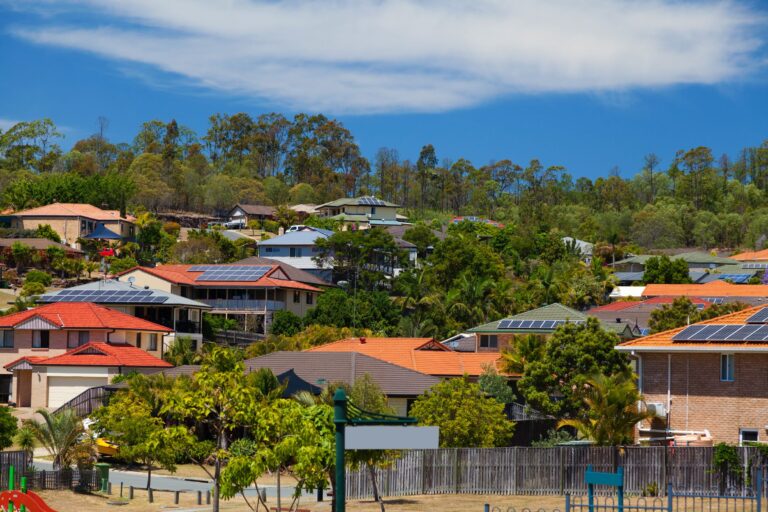
20 November 2020
By Sarah Wilson
Australia is leading the world in rooftop solar per capita with over 2.5 million households across the country having adopted residential photovoltaics (PV) to date. What’s more, according to Bloomberg New Energy Finance, in the coming years Australia is on track to have the most decentralised electricity network in the world, overtaking Germany for top position. It is the adoption not only of solar PV but also a range of technologies collectively referred to as Distributed Energy Resources (DER) that is responsible for our status as a DER superpower. DER can include residential and suburb scale battery storage, electric vehicles (EVs) and technologies that manage demand at premises.
These impressive statistics are due to a number of reasons according to Lachlan Blackhall, Entrepreneurial Fellow and Head, Battery Storage and Grid Integration Program at The Australian National University.
“Beginning a decade ago, the high uptake of solar PV amongst Australian households was in response to feed-in-tariffs and government rebates. It simply made good financial sense to install solar panels on your roof,” said Lachlan. A second reason is environmental in nature. “Customers have been installing PV in recognition of the important role that more renewable generation will play in addressing the existential crisis that is climate change.”
More recently, with the greater availability of residential battery storage a third reason is that Australians are seeking greater energy independence. “Australians like the notion that they can capture the energy from their roofs during the day, store it in a battery and use this energy later in the evening when they come home from work,” said Lachlan.
It is the opportunities that DER provide that change the playing field and open up a myriad of choices for the energy customer. “There are opportunities to empower customers with increased choice. DER provides many opportunities for customers to reengage with the electricity system. For example, through the generation of energy via rooftop solar, installing a home battery and using this home battery to become part of a Virtual Power Plant – giving the customer opportunities to make money by selling energy back to the grid.
“While engaging with the energy system will appeal to some people, the majority just want to be able to turn the light switch on and it works. It’s all about choice,” said Lachlan.
Importantly DER also provides opportunities for increased equity. Take for example suburb-scale batteries, a burgeoning technology with trials underway in Western Australia and New South Wales. “Essentially everyone in a defined neighbourhood could benefit from a suburb-scale battery be they vulnerable customers, renters or apartment owners,” said Lachlan.
Given the role that DER uptake by individuals and communities is playing in reshaping our energy system, it is Australians, all Australians, that should be put front and centre of the energy transition according to Lachlan. “I would like to see more focus put on the social science side of the energy transition. Industry, government and academia, we need to talk to customers first and foremost. We need a customer vision for our future grid.”
With that said, what does Lachlan see as the future for DER, indeed Australia’s entire electricity system?
“Certainly, the future grid is going to have significant DER uptake – residential and suburb-scale batteries, EVs, rooftop PV. However, there is also going to be a lot of utility scale energy generation and storage – large scale solar and wind, battery storage and pumped hydro.”
As for the energy transition more broadly? “There is no one solution to the energy transition, there is going to be a plethora of new generation sources, new systems and capabilities and new operational paradigms to manage the range of social, technical and economic issues that we must address through our energy transition,” said Lachlan.
On the technical side there are fundamentals that we need to get right to ensure that DER contributes to energy reliability, affordability and security. “There are some simple things we need to do well. We need to agree on the foundational capabilities like technical standards and interoperability, to ensure that DER is integrated into the system and able to participate in markets for energy and ancillary services,” said Lachlan.
Assisting the technical side of the energy transition, the ANU Battery Storage and Grid Integration Program is part of a $13 million, ARENA funded project entitled – evolve. The project is developing smart software for the orchestration and coordination of 21st century electricity systems. The project is demonstrating cost-effective ways to increase network hosting capacity without building more poles and wires. A central mechanism used in evolve is dynamic operating envelopes – read our explainer here. A recent ARENA knowledge sharing report delves into the calculation and use of dynamic operating envelopes.
Ultimately the goal of our energy transition must be to create an electricity system that meets the needs and aspirations of all Australians.
